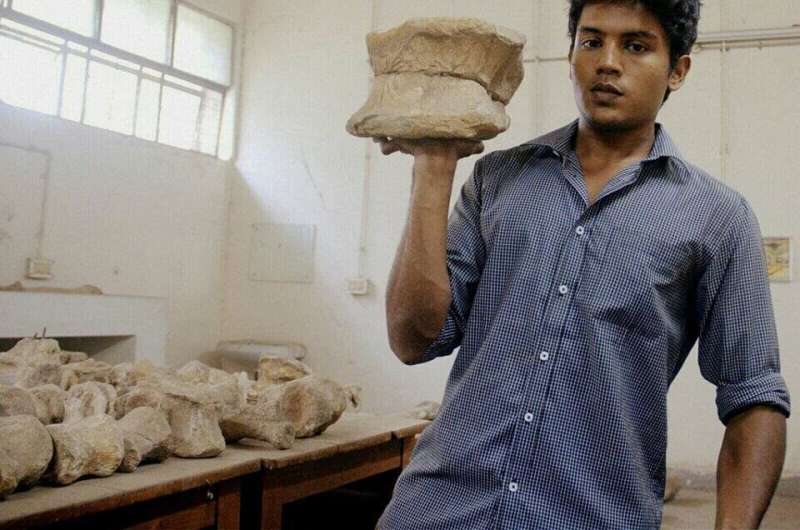In a groundbreaking discovery, a new study from the University of Michigan has revealed that the sauropod dinosaur Kotasaurus yamanpalliensis, which roamed the ancient Indian landscape, possessed a bony tail club. This finding not only enriches our understanding of Kotasaurus but also sheds light on the evolutionary origins and function of these enigmatic structures. The research, published in the Journal of Vertebrate Paleontology, suggests that the tail clubs may have consisted of up to three fused vertebral elements, hinting at the complex adaptations of these extinct giants.

Finding Kotasaurus’s Killer Claw
Tariq Abdul Kareem, a graduate student at the University of Michigan, led the study analysing four ellipsoidal skeletal elements collected from the Kota Formation in the Pranhita-Godavari Valley of south-central India. They belong in the tail clubs of Kotasaurus, a sauropod dinosaur, and are now safely ensconced within the premises of the Geological Survey Of India (Southern Region,) Hyderabad.
The Indian tail clubs observed in these structures, thought to have occurred about 175 million years ago, were similar to bone surfaces from other early sauropods including Shunosaurus lii and Omeisaurus tianfuensis that are found in China. The near-complete tail of ShunosaurusHolotype tail provides details for morphological comparisons to infer the evolutionary history of these powerful appendages.
Cracking the Secret of Sauropod Tail Clubs
The Indian tail clubs were studied with powerful computed tomography (CT) scans that allowed researchers to look inside the structures and observe growth lines and other distinct features. These results not only provide important insights into Kotasaurus but also open exciting avenues for future studies aimed at understanding the evolutionary relationships and function of these characters.
That the Indian and Chinese tail clubs are also similar in appearance and span such a vast period of time suggests that they may have developed independently or be a trait widespread among some of the earliest sauropods. It is an important confirmation of the importance of the Kota formation in understanding the early evolutionary background of these so-called dinosaurs.
From Head to Hind: Sauropod Evolution in India
For Jeffrey Wilson Mantilla, the lead author and a professor in the Department of Earth & Environmental Sciences at Michigan and curator at the university’s Museum of Paleontology who is among those interested in Indian tail clubs and their relevance to early sauropod evolution, this study round makes that square.
Mantilla looked initially at the Kotasaurus material in 2001 when he visited India and was able to work with the late P. Yadagiri, who discovered and described this dinosaurzig. This latest research complements work by Mantilla and others, reflecting a current discourse in paleontology on the adaptive significance of tail clubs in sauropod dinosaurs.
Data from this study help filling a gap in our knowledge about Kotasaurus and shed light on the evolutionary transition of the earliest small bipedal dinosaurs to large quadrupedal sauropods. Such discoveries reinforce the need for more exploration and research in the Kota Formation, which has so far been enlightening us about India’s enigmatic past.
